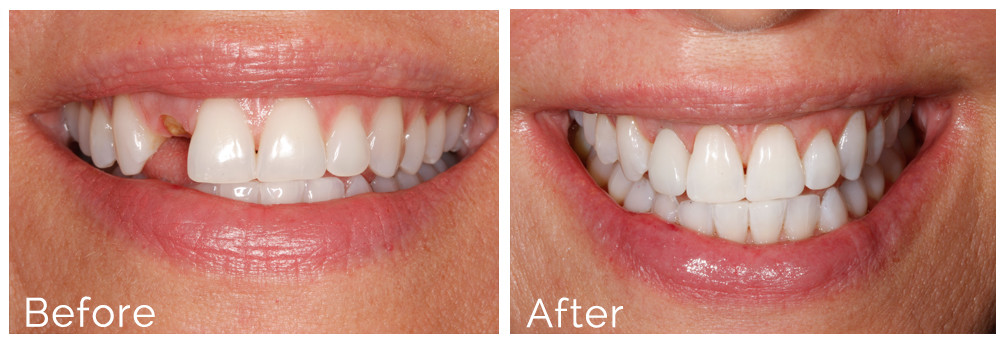Indicators on Dental Sense You Should Know
Indicators on Dental Sense You Should Know
Blog Article
4 Easy Facts About Dental Sense Explained
Table of Contents9 Easy Facts About Dental Sense ShownThe Basic Principles Of Dental Sense Dental Sense - An OverviewThe Single Strategy To Use For Dental Sense
are clinical gadgets operatively dental implanted right into the jaw to recover an individual's capability to eat or their appearance. They offer support for synthetic (fake) teeth, such as crowns, bridges, or dentures. When a tooth is shed due to injury or condition, a person can experience problems such as quick bone loss, faulty speech, or changes to eating patterns that result in pain.Dental dental implant systems contain an oral implant body and oral implant joint and may additionally include an abutment fixation screw. Dental implants. The oral implant body is operatively placed in the jawbone in location of the tooth's root. The oral implant joint is generally affixed to the dental implant body by the joint fixation screw and expands with gums right into the mouth to support the affixed synthetic teeth
(https://fliphtml5.com/homepage/hegcy)Structure of The Dental Implant System picking dental implants, speak with your oral supplier regarding the prospective benefits and threats, and whether you are a prospect for the treatment. Points to take into consideration: Your total health and wellness is a vital consider establishing whether you are a good prospect for oral implants, how long it will require to recover, and how long the implant might remain in area.
Cigarette smoking might affect the recovery process and lower the lasting success of the dental implant. The healing process for the implant body may take a number of months or longer, during which time you typically have a short-term abutment in location of the tooth. the oral implant treatment: Thoroughly adhere to the oral hygiene instructions offered to you by your oral provider.
Dental Sense Fundamentals Explained
Implant failing can lead to the demand for an additional operation to deal with or change the dental implant system. Recovers the ability to chew Recovers cosmetic appearance Aids keep the jawbone from diminishing as a result of bone loss Preserves the health and wellness of the surrounding bone and periodontals Helps keep adjacent (close-by) teeth secure Improves lifestyle Damage to surrounding natural teeth throughout dental implant placement Injury to the surrounding tissues during surgical treatment, such as sinus perforation Injury throughout surgical treatment (for instance, crack of surrounding jawbone) Inadequate function, such as seeming like the teeth do not attack with each other typically A feeling that the tooth is loosened or turning in place arising from an abutment screw loosening Implant body failure (looseness of the dental implant body) as a result of systemic infection, which might be more probable in patients with uncontrolled diabetics issues because of local infection in bone and gums sustaining the dental implant body due to delayed healing, which might be most likely in people that smoke Difficulty cleansing the gum tissues around the implant, resulting in inadequate oral health Untreated gum condition Post-surgical pins and needles as a result of nerve impingement or damage Constantly notify healthcare service providers and imaging technicians that you have dental implants before any magnetic resonance imaging (MRI) or x-ray treatments.
FDA is not conscious of any kind of negative events reported for MRI or x-ray procedures with dental implants. Dental implants systems are usually made of materials that follow international agreement criteria of the International Organization for Standardization (ISO) or ASTM International. These standards have information of what makes a safe product.

An oral implant is a framework that replaces a missing out on tooth. With screw-like devices, the cosmetic surgeon inserts an implant right into the jawbone, and it acts as a support for a fabricated tooth, called a crown.
Dental Sense Fundamentals Explained
Some individuals are not qualified for dental implant surgical procedure. It is for dental cosmetic surgeons to operate on individuals with: acute illnessuncontrollable metabolic diseasebone or soft tissue disease or infectionIf these problems are fixed, a person can have the surgery. In, oral surgeons avoid operating people with: If people with any one of the above go through oral implant surgical treatment, there is a higher danger of the implant stopping working.

Oral implant surgery is an individualized process. It's not the very same for everybody. The adhering to offers a general overview of what you can anticipate your dental practitioner, oral doctor, periodontist or prosthodontist to do: Place the dental implant surgically. Offer you time to recover. Connect the article and last crown, bridge or denture.
Next off, your doctor will very carefully position the oral implant into your jaw. Finally, your specialist will rearrange your gum tissues and close the laceration with stitches. If your implant is near the front of your mouth, your dental practitioner will make a momentary tooth for you to wear until you heal. By doing this, you won't have a gap in your smile while you recoup.
Dental Sense for Beginners
Your copyright can inform you what to expect in your situation. During the recovery phase, your jawbone must fuse to the dental implant. This process, called osseointegration, is essential for security and long-term success. This procedure can take anywhere from 3 to 9 months. In some situations, it may take much longer.
When your dental implant heals, your dental expert can affix the abutment (small port message) and your final reconstruction (crown, bridge or denture). This generally takes regarding one hour to finish and might require a second small surgery. You should not feel any kind of discomfort during your dental implant procedure since your provider will certainly make use of medicine to numb your gum tissues.
Report this page